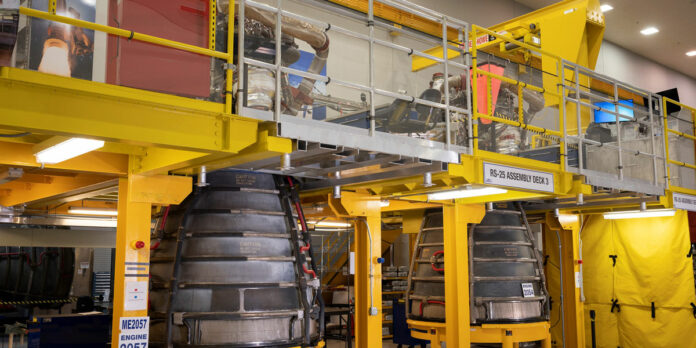LOS ANGELES – The space program recently took another step on its return to the moon.
This time, NASA turned to something old to help something new.
Aerojet Rocketdyne completed the four RS-25 engines that will power the core stage of NASA’s super heavy-lift Space Launch System rocket during the historic Artemis III mission. The upgraded engines served the shuttle program and will now generate about 2 million pounds of combined thrust.
“The Artemis III mission is pivotal in our nation’s goal to return American astronauts to the surface of the Moon, establish a sustained presence there and pave the way for crewed missions to Mars,” said Eileen P. Drake, Aerojet Rocketdyne CEO and president. “As our nation makes this next giant leap in its space program, it is leveraging the extensive knowledge and lessons learned that were gained during our earlier exploration efforts, including the Apollo, Space Shuttle and Artemis I missions.
“We are truly standing on the shoulders of those who pioneered the exploration of deep space.”
The Artemis III RS-25 engines flew 138 individual astronauts to orbit and supported 26 Space Shuttle missions, including:
- Multiple International Space Station assembly missions
- STS-95: The flight of then-U.S. Senator John Glenn, one of NASA’s original Mercury astronauts
- STS-114: The Space Shuttle program’s return to flight following the Columbia accident
- STS-125: The final Hubble servicing mission
In addition to the RS-25 engines, Aerojet Rocketdyne has delivered its other propulsion systems for the SLS rocket and a majority of the propulsion systems for the Orion spacecraft.
Additional Aerojet Rocketdyne propulsion includes the RL10 engine and 12 MR-106 reaction control system thrusters that will support the SLS’s second stage, called the Interim Cryogenic Propulsion Stage.
Aerojet Rocketdyne also supplies major propulsion elements for NASA’s Orion spacecraft, including the Orion Main Engine; the jettison motor on the Launch Abort System; eight auxiliary engines for trajectory control and positioning on the service module; and 12 reaction control system engines that guide the Orion crew module’s atmospheric re-entry.
Don’t miss out! Subscribe to our email newsletter to have all our smart stories delivered to your inbox.



